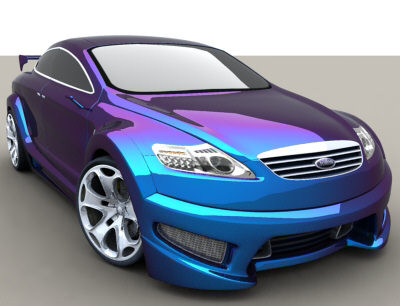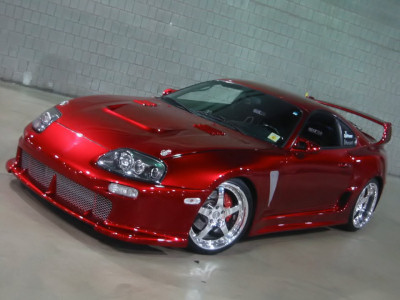There are several subtypes for this illegal behavior involving planned events. One of them, and by far one of the most popular, is drag racing. In this two or more cars can compete, and it is similar to the red-light green-light spontaneous scenario. Except in the planned event it will usually be three honks of a horn, whereupon the third the participants take off down a designated length of road. The first one to reach the finish line, usually two cars parked across from each other, is declared the winner, unless the contest is 2 out of 3. During this the vehicles will often be redlined, however shifting while redlined is very risky, and poses the severe risk of totally ruining the car’s transmission and damaging the engine. Therefore the driver must be very skilled at shifting before redlining, managing the acceleration to prevent spin, and finally maneuvering next to another vehicle with no barrier in between. The results of these races can be tragic, as both cars could be going at more that 100 miles per hour, and another car, unaware of the event, pulls out on its normal route. What then occurs is a spectacular accident in which many men women and children have so far lost their lives. This is why many races occur between the hours of 2 and 5 AM.
http://carmodifcation.blogspot.com/
Over-steer racing, otherwise known as Touge racing, is an ever gaining popular motorsport and illegal activity on the street, where the vehicle is purposefully drifted in order to turn, by over steering the vehicle and causing something that normal people would take a load in their pants to on a rainy night. The sport on the street usually involves two cars that will race around a winding road, with one car trying to keep up with the other car. If the car behind can keep up, he or she is declared the winner of that round. This is then repeated with the roles reversed, where the car behind is now the car in front. Should the car behind fall behind, the car in front is declared as the winner. Should there be a tie, another round may be done, or a drag race to finish it off as a tie breaker may be done. The risks of losing control in drifting are much higher than the previous two covered so far. In fact this is one of the very dangerous forms of the sport.
Finally comes one many people are familiar with. The run. Or specifically, the Cannonball Run. The Cannonball run is a point to point race, meaning it might start in New Mexico and end in Texas at specified town at specified ending locations. This means that the races can last for more than one day, and will usually have a navigator accompanying the driver in order to make it there quickly, and avoid any wrong turns. Today in the United States the laws are so stringent that it is virtually impossible to organize one of these in which the participants can actually go over the speed limit. However this does not preclude one that facilitates navigation as the primary winning factor, as long as the speed limits are kept and all cars actually go the speed limits it is not illegal, or at least not as noticeable. Such an example would be a starting location in Los Angeles, and an ending location in a small obscure town in Florida. The navigation across the country and keeping pace while using the different roads and interstates available could give some drivers ample opportunity to outpace their competitors. The last major event in which speed was the factor occurred in the late 70’s to early 80’s. However the ones where navigation is the key are still ongoing today, although obscure.
An alternative that was directly spun off from the Cannonball involves rallies on non-public roads, and have actually become in some cases sanctioned sports, as there is minimal risk to the public on private property, plus the addition of signed waivers. There are also other vents, like the Gumball 3000 and the Players Run. Most of them are called rallies rather than races due to the legal implications of hosting a race across the U.S. Overall most forms of the racing today exist in the spontaneous group, or the small drag or grouped events rather than large nation wide races that stretch more than 2-3 thousand miles.
There are many different and odd words in the street racing community, and every region has their own variations, however some of the more common terms are known throughout. Some people may be left behind in the conversation if they talk to someone who participates in the community of illegal racers. Thus I will extrapolate a few of these terms and words for you.
Jump - First of all there is what is known as the jump. This is also known in professional drag racing; as such you probably know this one. It means to leave early before the green light, flag, or horn has been activated or sounded. As such it is breaking the rules and the race can be redone should the other driver stay at the line. However, should the other racer go when the first one jumps it will be considered a valid race – and unlike professional sports it is not a grounds for disqualification.
Move - Also known as a break, or a kick, as in to kick off or break away. In this one car shoots off before the others have the signal or flag. As such the person who does this is liable to actually be kicked out, or have physical violence from other participants descend upon them. However this is also used as a handicap for new drivers, as they start the race, and the others start as soon as they see the new driver pull out. It can also be done as a way of handicapping someone who may have been wronged in a previous race, allowing for them to have a head start. But usually it is the cause for a severe beating and backlash.
Dig - Cars line up with the front bumpers all at the same line. Then they race to another destination, either like a drag or continuous. Digging in, so to speak.
http://carmodifcation.blogspot.com/


No comments:
Post a Comment